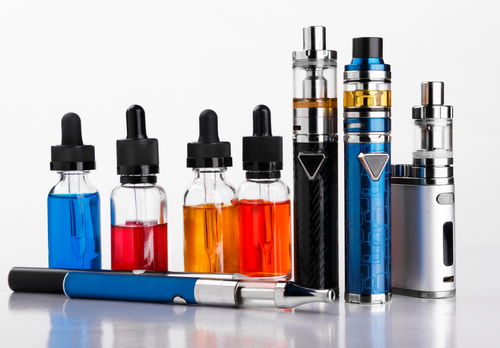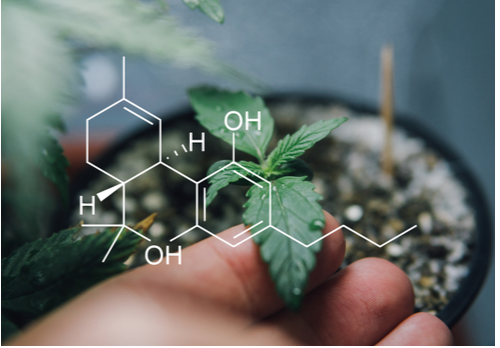The Role of Phytocannabinoids in the Endocannabinoid System
If I had to choose one word to explain the function of the Endocannabinoid System (ECS), it would be homeostasis. From the Greek word for “steady,” homeostasis refers to the processes used by living things to maintain stable conditions necessary for their survival. Endocannabinoids, cannabinoids naturally produced by our bodies and phytocannabinoids, plant cannabinoids produced by the cannabis plant, assist the ECS in maintaining homeostasis. In this article I will define phytocannabinoids, list the major phytocannabinoids found in cannabis, describe their effects, define the three components of the ECS and explain how it all works together.
What are Phytocannabinoids?
Phytocannabinoids, also known as cannabis cannabinoids, are chemical compounds with lipophilic properties produced in the trichomes of the cannabis plant. Many of them are not found in any other plant. Researchers have identified over 85 phytocannabinoids and there may be well over 100. They mimic the function of endocannabinoids, naturally produced cannabinoids, one of three essential components of the ECS. The other two are the cannabinoid receptors and the enzymes that break down the endocannabinoids.
The ECS controls many bodily functions including stress, appetite, sleep, pain, reproduction, cardiovascular function, gastric function, reward and motivation, just to name a few. Phytocannabinoids affect all these functions through their interaction with the ECS, providing a myriad of health benefits. These include seizure control, reduction of nausea and vomiting, a decrease of anxiety and depression, pain relief and a reduction of inflammation which is the source of many diseases.
List of Phytocannabinoids
The majority of phytocannabinoids occur in very small amounts. Present in raw cannabis are the 8 major cannabinoid acids, identified by the “A.”
Here is the list:
- CBGA (Cannabigerolic acid)
- THCA (Delta-9 tetrahydrocannabinolic acid)
- CBDA (Cannabidiolic acid)
- CBCA (Cannabichromenic acid)
- CBGVA (Cannabigerovarinic acid)
- THCVA (Tetrahydrocannabivarinic acid)
- CBDVA (Cannabidivarinic acid)
- CBCVA (Cannabichromevarinic acid)
The cannabis plant does not directly produce the cannabinoids THC and CBD. These cannabinoid acids must be subjected to heat, known as decarboxylation, which activates the chemical compounds that produce its many medicinal benefits.
For example: THCA becomes THC, CBDA becomes CBD
Cannabinoid acids are not known to produce intoxicating effects.
Many have medicinal properties such as antibiotic or insecticidal. This may explain why the cannabis plant produces these compounds as they act as protection for the plant.
Cannabinoid Precursors
CBGA is the initial compound that the enzymes in the cannabis plant use to make THCA, CBDA and CBCA
CBGVA is the initial compound that yields THCVA, CBDVA and CBCVA. The “V” compounds have slightly shorter chemical structures. They are non-psychotropic and they are thought to contain anti-inflammatory properties which may be useful to relieve arthritis and other inflammatory conditions.
CBN
When THC is exposed to oxygen over time, it gradually degrades into CBN. Older flower products tend to contain more CBN, especially when they are not stored in air-tight containers. It is yet another example of a phytocannabinoid that is not directly synthesized by cannabis. It is found in very small amounts in most strains. It is considered to be mildly psychotropic. However, when it is combined with THC, the result is more intense sedation. It also appears to demonstrate antibiotic, anti-inflammatory and anti-seizure properties. It is great for sleep, for reduction of pain and muscle spasms.
Effects of Phytocannabinoids
- THC is the only phytocannabinoid known to have intoxicating effects by itself and it produces dozens of medicinal benefits
- THCA reduces nausea, seizures, muscle spasms, and fights tumor and cancer cells.
- THCV typically appears in small quantities in strains and cannabis products. It appears that THCV influences the effects of THC, depending on the dosage. At low doses, THCV seems to reduce the activation of CB1 receptors by THC, similar to CBD. However, at much higher doses, THCV seems to increase the activation of CB1 receptors, similar to THC. Its medicinal benefits include anti-seizure properties, appetite suppression and may aid in weight loss.
- CBD is non-psychotropic but it influences the interaction of THC with CB1 receptors and may impact how a cannabis product affects an individual. It is now recognized that ingesting CBD can minimize the psychotropic effects of THC. It produces dozens of medicinal benefits.
- CBDA reduces nausea, inflammation and fights tumor and cancer cells.
- CBG is an antidepressant, muscle relaxant, antibiotic and antifungal agent and reduces blood pressure.
- CBC reduces pain, inflammation and has antifungal, antibiotic and anti-cancer properties.
3 Key Components of the Endocannabinoid System
- Endocannabinoid Receptors
- Endocannabinoids
- Metabolic Enzymes
Endocannabinoid Receptors
There are two major types of endocannabinoid receptors: CB1 and CB2.
1. CB1 receptors are found predominantly in the brain, lungs, liver, kidneys and especially in the central nervous system.
2. CB2 receptors are found predominantly in the cells and tissue of the immune system and in the gut, spleen, liver, heart, kidneys, bones, blood vessels, lymph cells, endocrine glands and reproductive organs.
Endocannabinoids
There are two major endocannabinoids: anandamide and 2-AG. Made from fat-like molecules contained in cell membranes, they are produced and used only when needed rather than synthesized and stored for future use like many other molecules.
Anandamide (AEA)
Scientifically known as N-arachidonoylethanolamine, it is often referred to as the “bliss molecule.” It is a fatty acid neurotransmitter, believed to impact memory and early stage embryo development. It is also responsible for the reduction of fear and anxiety and a mood enhancer, responsible for the “endorphin high.”
2-Arachidonoylglycerol (2-AG)
It appears in the central nervous system at high levels and acts as a signal in the regulation of the release of neurotransmitters. It activates both CB1 and CB2 receptors, playing a key role in many functions such as emotion, cognition, pain sensation, energy balance and neuroinflammation.
Metabolic Enzymes
The two major enzymes are Fatty Acid Amide Hydrolase (FAAH) which breaks down anandamide and Monoacylglycerol Lipase (MAGL) which breaks down 2-AG. Their function is to make sure that the endocannabinoids are used only as long as needed after which they are rapidly destroyed.
Much more research is needed to investigate the medicinal properties of the lesser-known phytocannabinoids and the function of the ECS.
Sources:
leafly.com, A List of Major Cannabinoids in Cannabis and Their Effects, Nick Jikomes, March 24, 2017
news.green-flower.com, Your Beginner’s Guide to the 9 Major Cannabinoids, Dr. Jessica Knox, July 19, 2020
leafly.com, What is The Endocannabinoid System and What Is Its Role? Nick Jikomes, Dec. 12, 2016


